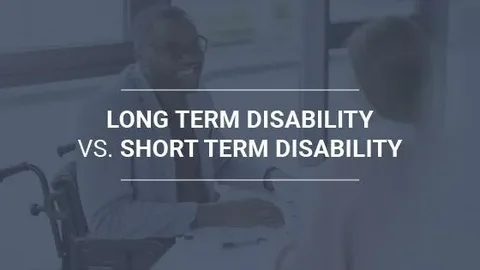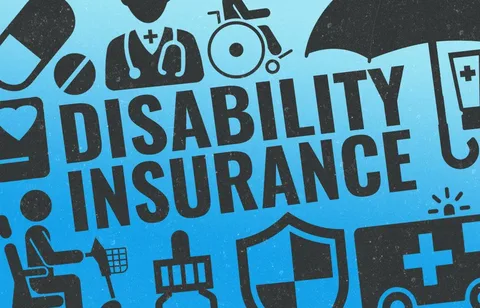You don’t need it—until you do. That’s why disability insurance exists.
What Is The Difference Between Short-Term And Long-Term Disability Insurance?: Disability insurance plan is often overlooked, yet it plays a critical role in protecting your income when you’re unable to work due to injury, illness, or pregnancy. Among the different types available, short-term and long-term disability insurance serve different but complementary purposes. Understanding their distinctions can help you make smarter financial and healthcare decisions.
Let’s explore their definitions, features, and differences to help you determine the right coverage for your needs.
Understanding Short-Term Disability Insurance
Short-term disability insurance (STD) provides income replacement for a brief period—typically from a few weeks up to 6 months—when you’re unable to work due to temporary medical conditions like surgery recovery, pregnancy, or minor injuries.
According to Keka, STD policies often have a waiting period of 7 to 14 days before benefits kick in. These benefits generally cover 50% to 70% of your gross income and are usually offered by employers or can be purchased privately.

Key Highlights:
- Benefit Period: 3 to 6 months
- Coverage Type: Temporary conditions (e.g., injury, pregnancy, short-term illness)
- Waiting Period: 0 to 14 days
- Payout: Percentage of pre-disability earnings (up to 70%)
STD is ideal for individuals who have minimal emergency savings and want to avoid income gaps during medical leave.
Understanding Long-Term Disability Insurance
Long-term disability insurance (LTD) provides income protection for an extended duration, usually two years to retirement age, depending on the policy. It covers serious illnesses and long-term injuries that prevent you from returning to work.
As per Tata AIA, LTD usually kicks in after 90 to 180 days of continuous disability. Benefits may replace 40% to 60% of your gross monthly income.
Key Highlights:
- Benefit Period: 2 years to retirement
- Coverage Type: Chronic or permanent disabilities (e.g., cancer, severe injuries)
- Waiting Period: 90 to 180 days
- Payout: Partial income replacement (up to 60%)
LTD acts as a financial safety net if you can’t return to work for an extended period.
Key Differences Between Short-Term And Long-Term Disability Insurance
| Feature | Short-Term Disability (STD) | Long-Term Disability (LTD) |
| Benefit Duration | 3–6 months | 2 years to retirement |
| Waiting Period | 0–14 days | 90–180 days |
| Conditions Covered | Minor injuries, pregnancy | Cancer, chronic illness |
| Coverage Percentage | Up to 70% | Up to 60% |
| Cost | Lower premiums | Higher premiums |
As highlighted by SutiSoft, choosing between STD and LTD often depends on your job role, financial health, and likelihood of illness or injury.
Why Having Both Might Be Ideal?
A combination of both STD and LTD can provide complete income protection. While STD helps bridge the gap during the LTD waiting period, LTD secures your finances for long-term disruptions.
According to PolicyBazaar, having both insurances ensures seamless income continuity, preventing financial stress during health emergencies.
Conclusion
Understanding the difference between short-term and long-term disability insurance is crucial to protecting your financial future. While STD helps in short-term recoveries, LTD offers a long-term safety net for severe and chronic issues. By choosing wisely—or opting for both you ensure that unexpected medical events don’t derail your income or lifestyle.
FAQs
What Is The Main Difference Between Short-Term And Long-Term Disability Insurance?
The main difference lies in how long the benefit lasts. STD covers 3–6 months, while LTD can extend for years or until retirement.
Do I Need Both Short-Term And Long-Term Disability Insurance?
Yes, combining both can offer comprehensive coverage, especially if your employer doesn’t provide one type.
How Soon Do Benefits Start With Short-Term Disability?
Benefits typically begin within 7 to 14 days of the disability, depending on the policy terms.
What Happens If I Still Can’t Work After STD Ends?
If you have LTD, it kicks in after its waiting period. Otherwise, you may have to rely on personal savings or social security.
Can I Get Disability Insurance If I’m Self-Employed?
Yes. Many insurers offer individual STD and LTD plans tailored for freelancers and business owners.
Is Disability Insurance Taxable?
It depends on who pays the premium. If your employer pays, benefits may be taxable. If you pay, they are usually tax-free.
What Conditions Qualify For Long-Term Disability?
Common qualifying conditions include cancer, heart disease, major surgeries, and severe injuries.

